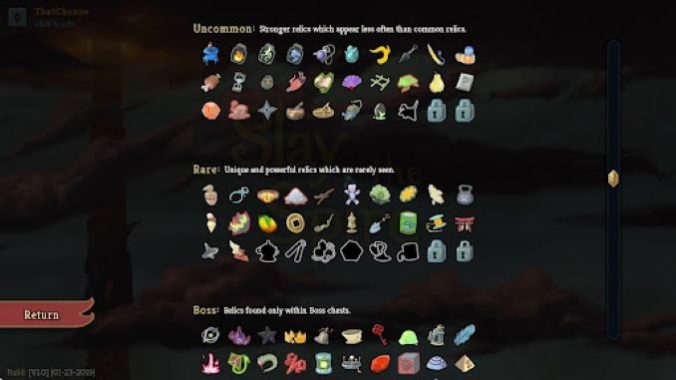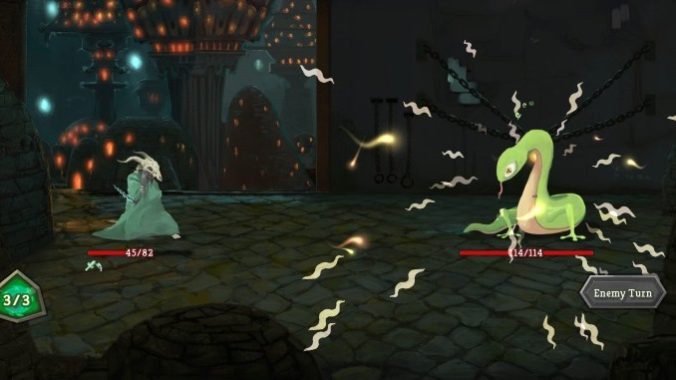There’s a bagel place I used to go to every other weekend whose reputation precedes it. Unlike the pale imitations that line other streets, it’s fancy: it has 30 kinds of cream cheese, canned coffee in the fridge, and its staff won’t complain (though they will side-eye you) if you get your bagel toasted. Whenever I talk about this place, I feel like I give the impression that it’s overrated. Everyone knows about it; everyone likes it. But whenever I go back I remember that it’s not overhyped at all: it’s simply so good that description can’t really do it justice.
Sometimes the legacy of a titanic success eclipses the reasons it was great in the first place. This is the story of Slay the Spire, a deck building roguelike that launched five years ago this month.You pick one of four characters and climb up a several-floor tower, battling monsters and gaining cards to add to your deck. Your goal is to reach the top of the tower and defeat its rotating final boss, a goal as simple to comprehend as it is brutal to execute.
I’ve been with Slay the Spire almost from the beginning. Since I picked it up in 2019, I’ve spent about 200 hours on it across saves on Switch and PC. When I got a free trial of Apple Arcade recently, I had to make the executive decision not to download Slay the Spire on my phone and have three platforms to card battle on. It’s everything to me: comfort game, one more turn machine, and easy recommendation to anyone who’s into videogames even a miniscule amount.
You’d think that after 200 hours I would have made some serious progress. And yet out of 20 difficulty levels known as “Ascensions” across four characters, I’ve only gotten to level 5 on one of them. At this point I have to admit I’m not that good at Slay the Spire, but I’m sure having fun.
And I’m not the only one. When Slay the Spire launched out of early access, reviews celebrated how fun it was to lose. It’s the most popular deckbuilding roguelike, a genre which has exploded and multiplied in the past few years like the slime boss at the end of Act 1. But most of the follow ups I’ve tried have failed to grasp the intangible magic that Slay the Spire still has.
In fact, when I look for impressions on the game, it appears more often as a comparison. Slay the Spire is the pinnacle of the genre it took mainstream, but there’s little discussion anymore of why it’s the best. This mystery bugs me on a personal level, too. I don’t like to replay games. Nor do I like to fail. So why have I played a disgusting amount of Slay the Spire?
One of the reasons is that replaying doesn’t ever feel like a retread. Each character is vastly different to play. The Defect, my favorite, is a robot who uses elemental orbs to deal passive damage each turn. When I last picked up the game, I had a run that was so close on a Claw deck (a deck made out of mostly 0-cost cards that get stronger every time you use them). Building a great deck in Slay the Spire can be thrilling. But what helps change things up more than anything else is relics.
Relics are items that provide bonuses for your entire run, obtainable from bosses, chests, and random events. There are over 50 relics, and each class has their own. Relics can be everyday objects, like the ice cream cone or the coffee dripper. There are pan-religious artifacts like prayer wheels or incense burners, or utensils and slices of monster parts.

Their charismatic visual design aside, relics completely change how you play the game. Some of them make you gain energy each turn while removing your ability to rest or upgrade cards. Others instead change how you arrange your hand of cards, like the runic pyramid, which prevents you from discarding your hand at the end of your turn.
Relics are compelling enough to players that there’s a mod that adds 100 relics to the game. If you collect all of one type in a single run, you get another relic that communicates, essentially, “what is wrong with you?” And whether they save you or send you down in flames, relics always force you to think in the abstract about how you’re playing.
That’s necessary because while Slay the Spire is accessible, it’s also hard. Some reviews at the time of release felt that dying in Slay the Spire never felt like being cheated. I actually disagree. On that Ascension 5 run I mentioned earlier, I died when the second-to-last boss had 1hp left. I got so close and I felt cheated, even if my failure was technically my own fault. But I can never feel angry at these moments. The runs where everything goes right come faster than any other roguelike I’ve played, every four or five climbs, meaning that when I fail I’m a few tries, max, from being in an excellent spot to succeed.
The death zone of Slay the Spire is somewhere between the first boss and the middle of the second floor. This is where you’ll know if your deck is strong enough, balanced enough between single and multi target attacks, and defensive enough (or so offensive that it becomes defensive). I would say about half my runs end here. This is also where the synergy between your relics and cards begins to matter. If the compatibility is busted—positively or negatively—you’ll know by the second boss.
But the reason I really love Slay the Spire is that even on runs where I know I won’t reach the end, I can still have fun on the way. I don’t feel this way about Hades, another game I love, but whose middle section can become a slog if you get a non-ideal build. In Slay the Spire, I often won’t realize a deck is suboptimal until just before I die. In contrast, I’ve reached the end with plenty of combos I didn’t think would work; the ice cream and poison stacking build that gave me chip damage for days, or the time I collected most of the fruit relics in what I affectionately think of as my grocery store deck.
The relics represent Slay the Spire’s most endearing quality: its encouragement of creativity. More than style or streamlined gameplay, I think this is why it remains a pillar of the deckbuilding genre while its descendents come and go. Its best magic trick is to place enough options in front of you that when you come up with something really cool, you feel like you’re the one who made it—even though it probably came together mostly by accident.
What other games have taken from Slay the Spire are its branching pathways, its random events, and its graded difficulty tiers. But what I wish they would learn from it is the joy of embedding little surprises, introducing random and sometimes hostile changes that run the risk of annoying the player in service of a larger goal of novelty. I can get very, very annoyed at Slay the Spire, but I prefer it to a cardboard cutout of a game that takes no risks to avoid offending. If I have to diagnose the deckbuilding roguelike genre with a problem, it’s that: smooth user experience does not a classic make. I want more frustrating games with more weird little items and no, I’m not kidding.
If you pressed me, though, I’d have to admit that I don’t really care what those other games do. I’ll always have the Spire.
Emily Price is a former intern at Paste and a columnist at Unwinnable Magazine. She is also a PhD Candidate in literature at the CUNY Graduate Center. She can be found on Twitter @the_emilyap.

